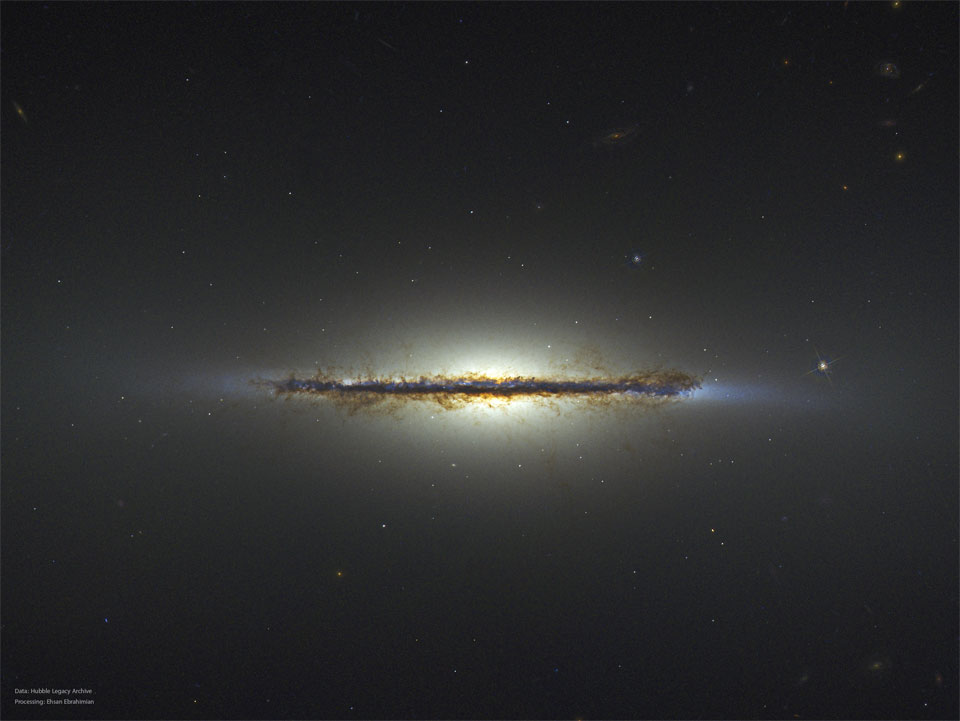2024年3月6日
M102: Edge-on Disk Galaxy
Image Credit: NASA, ESA, Hubble; Processing: Ehsan Ebahimian
Explanation: What kind of celestial object is this? A relatively normal galaxy — but seen from its edge. Many disk galaxies are actually just as thin as NGC 5866, the Spindle galaxy, pictured here, but are not seen edge-on from our vantage point. A perhaps more familiar galaxy seen edge-on is our own Milky Way galaxy. Also cataloged as M102, the Spindle galaxy has numerous and complex dust lanes appearing dark and red, while many of the bright stars in the disk give it a more blue underlying hue. The blue disk of young stars can be seen in this Hubble image extending past the dust in the extremely thin galactic plane. There is evidence that the Spindle galaxy has cannibalized smaller galaxies over the past billion years or so, including multiple streams of faint stars, dark dust that extends away from the main galactic plane, and a surrounding group of galaxies (not shown). In general, many disk galaxies become thin because the gas that forms them collides with itself as it rotates about the gravitational center. The Spindle galaxy lies about 50 million light years distant toward the constellation of the Dragon (Draco).
Tomorrow’s picture: not a distant galactic nebula
M102:侧向的盘状星系
影像提供: NASA, ESA, Hubble; 影像处理: Ehsan Ebahimian
说明: 这是什么样的天体啊?这是一个相对正常但侧向我们的星系。许多盘状星系其实和这张影像里的NGC 5866一样纤薄,只是它们并非侧向我们而已。而我们的银河系,则可能是我们最为熟悉的侧向星系。编录号为M102和NGC 5866的纺锤星系,拥有数量繁多、色彩红黑交错的复杂尘埃带,而众多的盘面明亮恒星,更让星系带着泛蓝的底色。在哈勃望远镜所拍摄的这张影像里,可以看到年轻恒星聚成的泛蓝盘,其伸展范围超出极纤薄星系面上的尘埃。从数道暗淡的恒星流、远离星系面的黝黑尘埃、及周围成群的星系(未显示)等迹证来看,纺锤星系大约在过去的十亿年内曾吞噬数个较小的星系。一般而言,许多盘状星系之所以会变薄,是因为形成它们的气体在绕着重力中心打转时内部发生碰撞。纺锤星系位于天龙座方向约5000万光年远之处。 (Spindle galaxy 纺锤星系)








One Comment